At some point, you find yourself locating the spark plug of your Champion dual fuel generator. Don't worry, we can help you. We pulled up information to give you the correct answer and here's what we learned.
For the Champion dual fuel generator, you can find the spark plug partly recessed behind the upper portion of the engine cylinder.
If you are new to your Champion dual fuel generator, locating the spark plug seems complicated. In this post, we will discuss how to easily locate and access the spark plug and its related maintenance. Keep reading!

How To Locate The Spark Plug Of Champion Dual Fuel Generator
If it's your first time locating the spark plug of your Champion dual fuel generator, it might appear a bit challenging. You can't readily find the spark plug since it's hidden behind the engine cylinder and enclosed by a casing. Here's a convenient way to locate the spark plug:
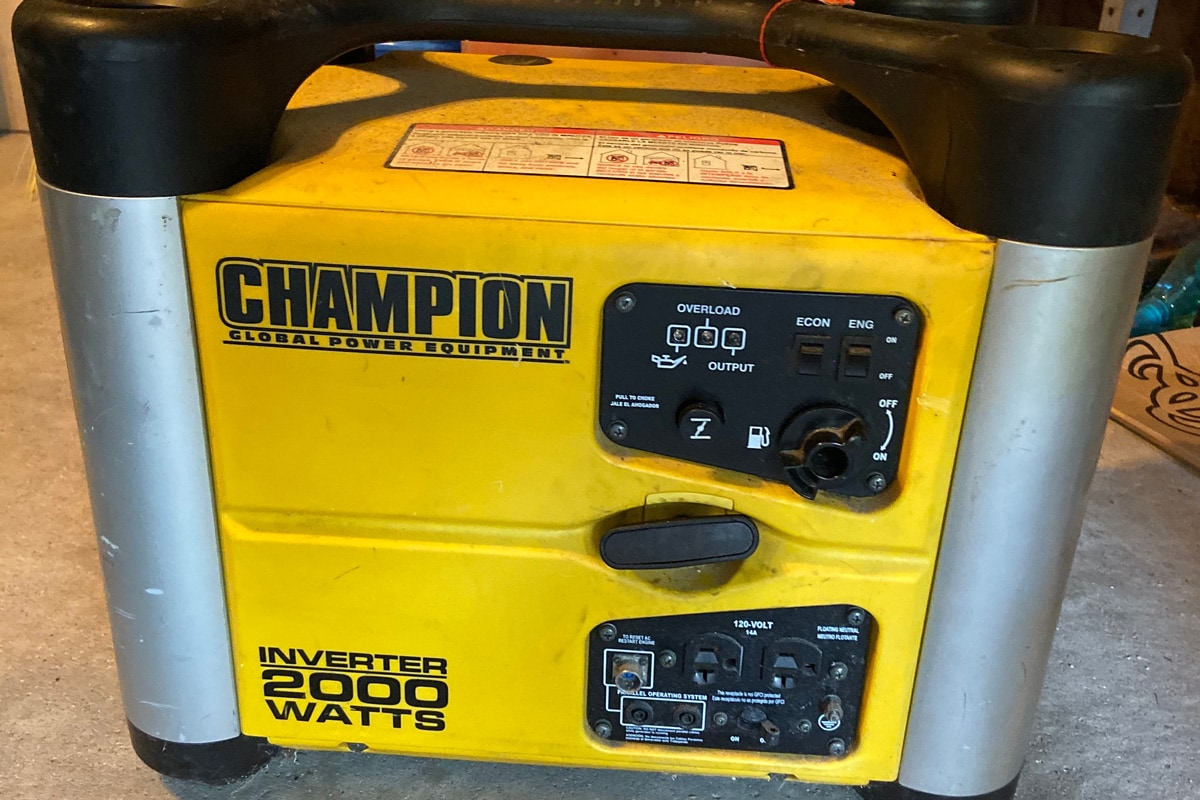
- If you're using an inverter-type generator, you need to remove the access panel. A flathead screwdriver is needed to remove the two screws to disengage the access panel.
- An easy way to find the spark plug is to locate the spark plug cap first. This is highly visible since it looks like tubular stainless steel conspicuous resting above the engine cylinder. The spark plug ignition coil is attached at its end.
- Once you get good access, remove the spark plug cap by firmly grabbing it, twisting it in either direction and pulling it off with your hand. The rotating motion helps to lessen the strain on the plug and the cap.
- Once you have successfully removed the cap enclosure, the spark plug is exposed.
- The attached spark plug is recessed behind the upper portion of the engine cylinder.
You may refer to the user's manual if there's a problem locating the spark plug. The user's manual can give instructions on where and how to get good access to where the spark plug may be hiding. Locations of spark plugs may vary across all models of Champion dual fuel generators.
How To Check the Spark Plug Of Champion Dual Fuel Generator
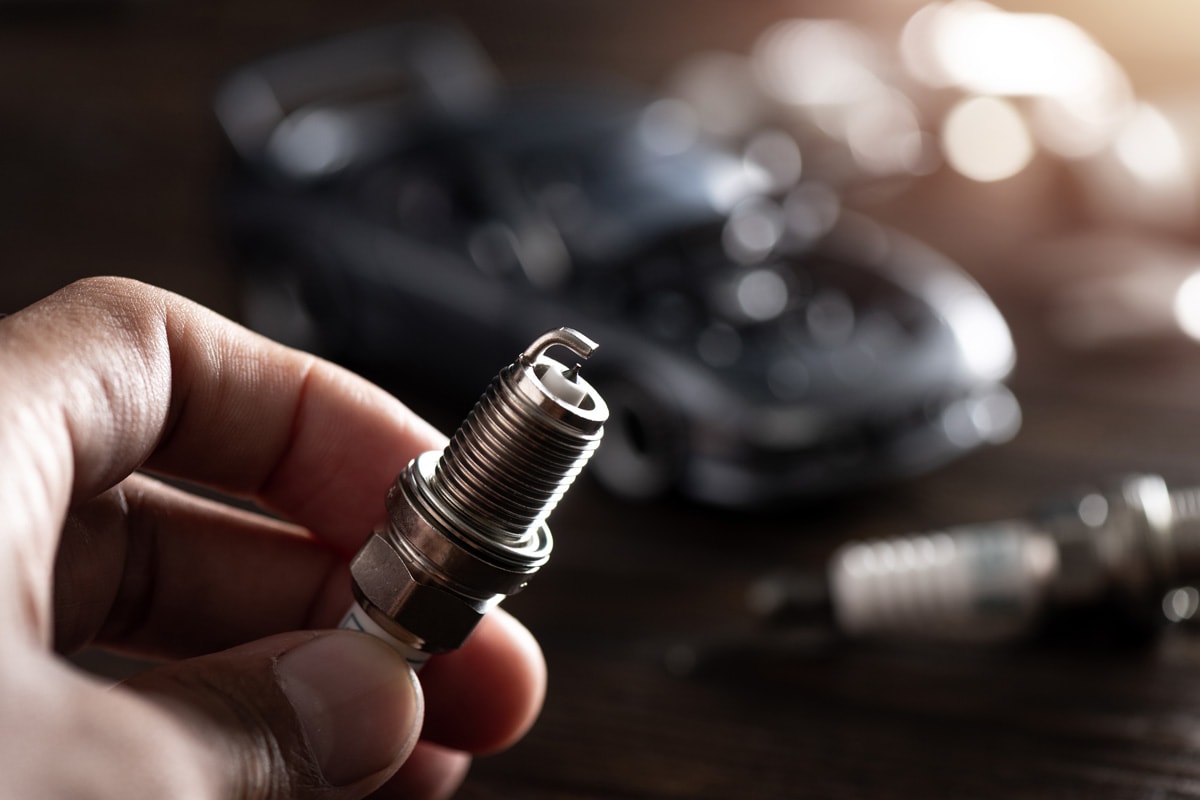
One of the preventive care and maintenance of your Champion dual fuel generator is to routinely check the spark plug every ">100 hours of usage. To thoroughly check, you need to detach it from the equipment. Here is a step-by-step procedure:
How To Remove The Spark Plug
To remove to spark plug from its housing, you need a 21-millimeter or 13/16-inch socket tool. This is the correct socket size since it exactly matches the diameter of the spark plug, thus giving a faster and more convenient means of removal. Luckily, this tool is included in the shipment of the generator.
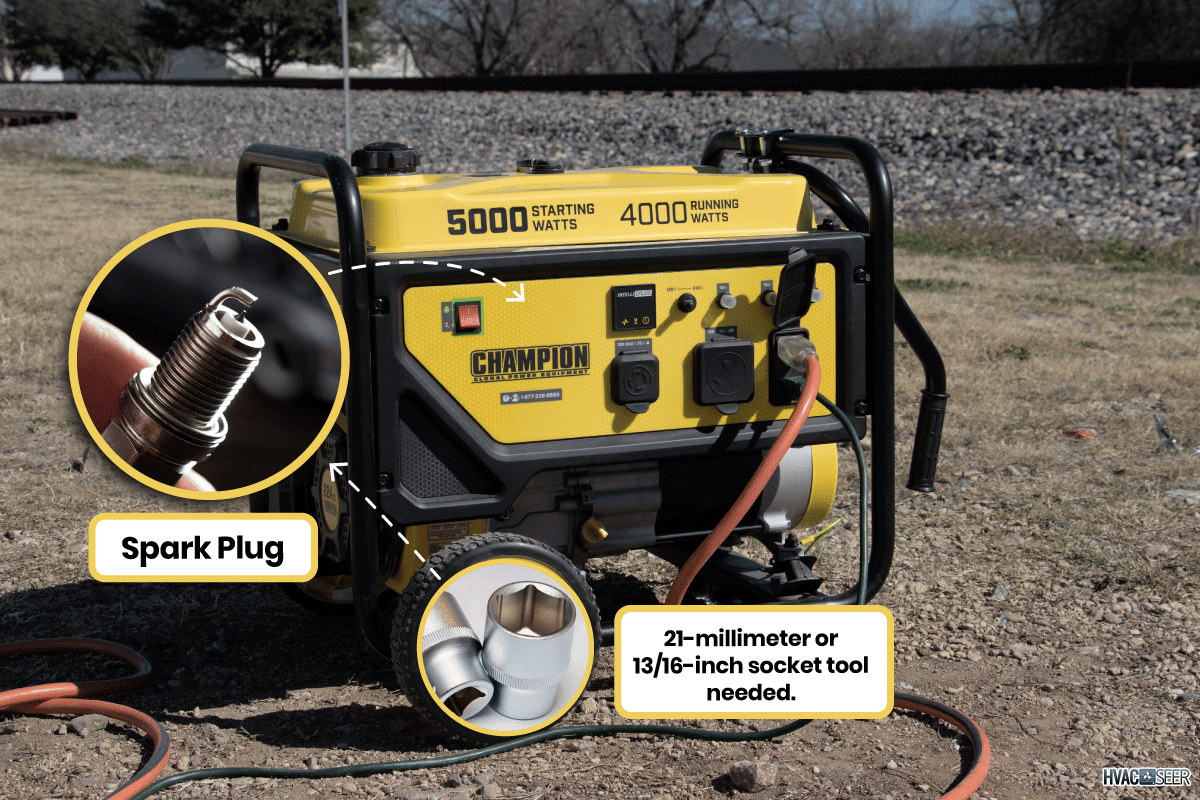
You can get this replacement socket tool from Amazon.
Position the socket tool around the spark plug and turn it counterclockwise. The spark plug should unscrew easily. Alternatively, some users use a torque wrench with the spark plug socket, a spark plug wrench, or a ratchet with an extension to aid in the removal.
Check out this socket tool with an extension in Amazon.
The use of the removal tools will only help in the loosening of the spark plug. The threading and unscrewing should still be done manually. A word of caution, never alter or change the angle of the socket since this will damage the plug.
Additionally, there are also instances that you experience resistance in unscrewing the spark plug. In this case, never apply force to it. It is suggested to apply penetrating oil to loosen the thread.
How To Check The Spark Plug
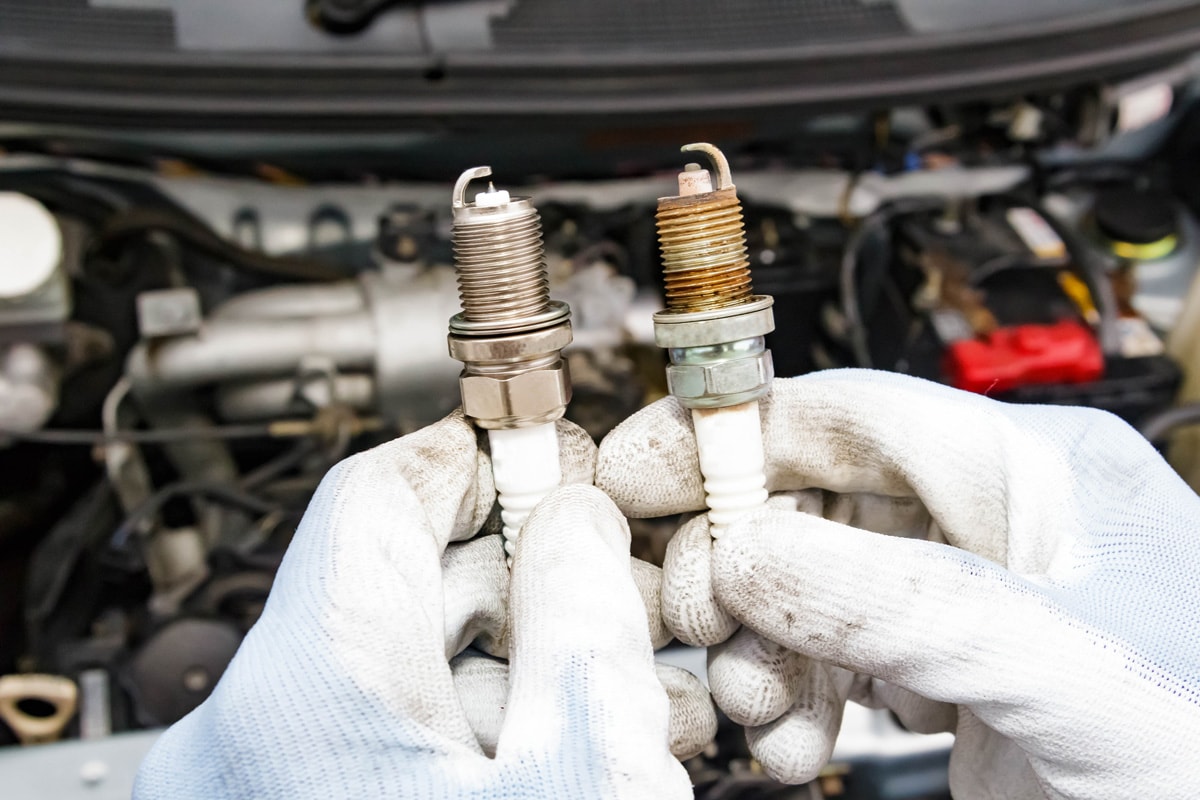
With the spark plug detached from its housing, you can now thoroughly check it. There are two important things to note while checking the spark plug. Firstly, you need to examine the electrode. It should be clean and not worn out to produce the required spark for ignition.
Take time to clean the spark plug. You can opt to lightly sweep with a wire brush to clean the grooves of the electrode. Also, take note that once the spark plug is removed, it leaves an open hole in the engine. Ensure that there should be no debris, dirt, or oil that may fall inside.
To cover the hole, you can replace the spark plug cap or place the socket even without the spark plug inside.
Secondly, you need to check the spark gap. This refers to the space between the end of the ground electrode (straight) and the tip of the center electrode (curved). Check the gap by using a spark plug gauge or a steel feeler gauge to get a precise measurement.
Position the gauge into the gap until you can freely move it but start to feel a little resistance. The gauge should fit just right, not too tight nor too loose.
The gap should measure 0.028-0.031 inches or 0.7-0.8 mm for engines 118cc and over. For those below 80cc, the gap should be 0.024-0.028 inches or 0.6-0.7 mm.
If the gap doesn't conform to the specifications, you need to make adjustments, either to increase or decrease. With the gauge, firmly press the ground electrode to lessen the gap or gently pry it open to increase the gap until the correct gap is accomplished.
Check out this stainless steel feeler gauge on Amazon.
During checking, you might notice that the spark plug is badly worn out, and the gap appears beyond repair and adjustment. In this case, it warrants a replacement with a new spark plug. You may refer to the operator manual for the specifications.
How To Replace The Spark Plug
Once you have cleaned and fixed the gap of the old plug, or you have purchased a new one, you can install it back on the engine cylinder. Grab the empty socket or the cap, and carefully thread the new or adjusted spark plug. With your hand, wiggle it a bit to ensure it sits correctly
Tighten it with the spark plug socket tool. Don't overtighten, else, it may damage the thread.
And lastly, replace the spark plug cap. The cap serves as a protective covering to secure the plug from external elements.
What Are The Safety Precautions On Working With Spark Plugs?
Just like any mechanical equipment, working on your Champion dual fuel generator requires safety precautions to avoid accidents and damage to your equipment. Here are a few safety tips:
- Shut off the power and disconnect the power source before working on the equipment, specifically when accessing any of its components.
- Wait for the engine to cool down before working. This is to avoid accidental burns if hot components are exposed.
- Disconnect the ignition coil from the spark plug to avoid accidental starting.
- Ensure the equipment is laid on a level and secured surface. This is to avoid unwanted leaking of oil and also accidental rolling of the wheels.
- When working on the component parts, it would be best to place the equipment on a working table. An elevated working area, aside from ergonomic benefits for the troubleshooter, gives a better workflow, and greater and better visibility when checking on the parts. Also, the detached component parts won't likely get lost rather than working on the ground surface.
- There should be no exposed flames and fumes within the vicinity. This is to avoid fires since the generator has gas.
- Work in a well-ventilated area, not wet or outdoors.
- Wear protective clothing and gear.
What Are The Indicators Of A Malfunctioning Spark Plug?
All engines use a spark plug to ignite the fuel and air needed to operate smoothly. An ignition is initiated when there's a good balance of fuel and air drawn through the carburetor into the engine, an ignition coil, and a spark plug.
When the starter rope is pulled, it draws fuel and air into the combustion chamber. Within the cylinder, the collected fuel and air pass through the flywheel and ignition coil to produce high-voltage electricity until it reaches the upper portion of the engine where it is ignited by the spark plug.
This combustion process keeps the engine running in which the spark plug is an essential component. Nevertheless, it can get worn out due to normal wear and tear, thus needing replacement.
Here are the signs that you need to replace the spark plug:
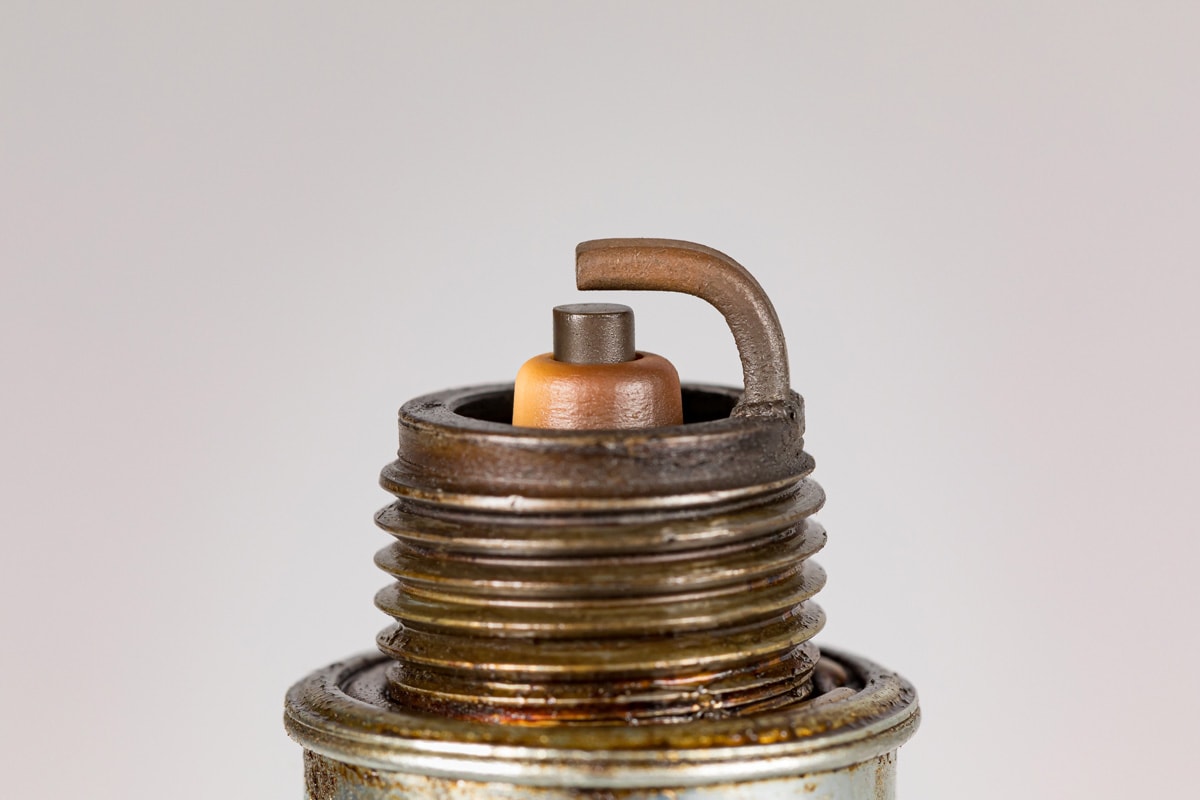
- The spark plug electrodes appear rusty or corroded. This fails to produce the required spark to start ignition.
- The spark plug has carbon residue buildup.
- There's a noticeable increase in fuel consumption even during normal usage.
- The generator is "hard starting". It requires numerous attempts to start the engine.
- The engine will start and stops abruptly after a few minutes.
- There's an engine misfire, that is, it runs rough.
- The generator fails to start at all.
To further help you in troubleshooting your Champion dual fuel generator, these information-rich posts are worth reading:
How To Start A Champion Dual Fuel Generator
Why Does My Champion Dual Fuel Generator Keep Shutting Off
How To Start A Generator That Has Been Sitting [For Years]
Final Thoughts
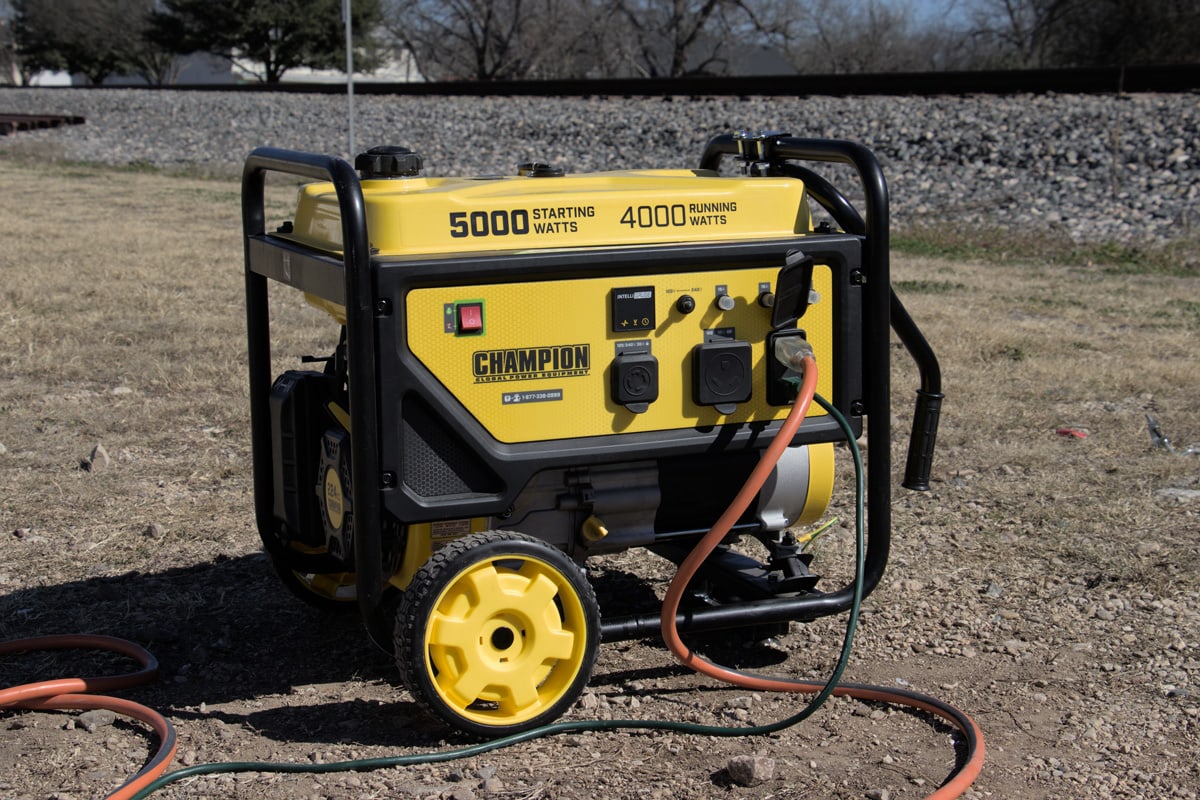
The spark plug is an essential component to keep the engine running in your Champion dual fuel generator. As part of preventive maintenance, it has to be routinely checked for rust and residue buildup and the required spark plug gap should be maintained.
The first step in doing the routine maintenance is locating the spark plug which may be challenging for the new user. A convenient way to find it is to locate first the spark plug cap which serves as the protective covering. Pulling the cap exposes the spark plug.
The spark plug is located behind the upper portion of the engine cylinder. A spark plug socket tool is needed to remove and install it.
You might be interested to learn more about generators, this post is for you:
How To Convert Dual-Fuel Generator To Natural Gas



